Estimated reading time 21 minutes, 43 seconds.
Like all good ideas, this one began in a bar. The participants were test pilots and flight test engineers, each with a decade or more of experience launching and certifying new airframes. Some had been there at the beginning of the C Series and other Bombardier business jet and multi-mission programs; others had test-flown de Havilland aircraft and even combat platforms. Together, they shared an acute understanding of the strengths and weaknesses of a wide range of new airframes and mission systems.
As the discussion wandered from favorite “ridiculous” requirements to ill-fated project decisions, it eventually settled on a simple question: Knowing the limitations of many airframes, could they design and build a more cost-effective, multi-purpose aircraft?
So was born Icarus Aerospace and its first aircraft, the Tactical Air Vehicle (TAV). The TAV is actually the baseline configuration for a proposed family of specialized aircraft, including a heavily militarized variant called WASP, and a high-altitude platform known as Branta. In short, a clean sheet customized to the requirements of any operator.

The TAV has largely remained under wraps since Icarus Aerospace was created four years ago. But after four design iterations and positive feedback from aviation analysts and several key military programs, the Montreal, Quebec-based company is opening up about the platform as it seeks government funding and market traction, explained Marko Ivankovic, senior project manager.
In its baseline configuration, the TAV offers a two-crew tandem glass cockpit with fly-by-wire flight controls and the latest avionics, sensors and data fusion. It proposes a payload capacity of 8,000 pounds, a max cruise speed of 360 knots, a range of 1,250 nautical miles (with 45 minutes reserve fuel), and unrefueled endurance of six-and-a-half hours. It also aims to be capable of 8Gs.
Whether manned, remotely piloted or fully autonomous, the TAV is being positioned to fulfill a range of missions from coastal and maritime patrol to intelligence, surveillance and reconnaissance (ISR), battlefield management, communication relay, aerial refueling, close-air support, search-and-rescue, medical evacuation and resupply, among others.
While the WASP and Branta each offer unique features – WASP can carry an array of precision and conventional weapons; the Branta has a larger, high-altitude wing span to operate up to 51,000 feet for over 30 hours at 300 knots – they share a common fuselage, powerplant, center wing, cockpit, and landing gear, and can readily accept interchangeable sensors, mission systems and mission kits.
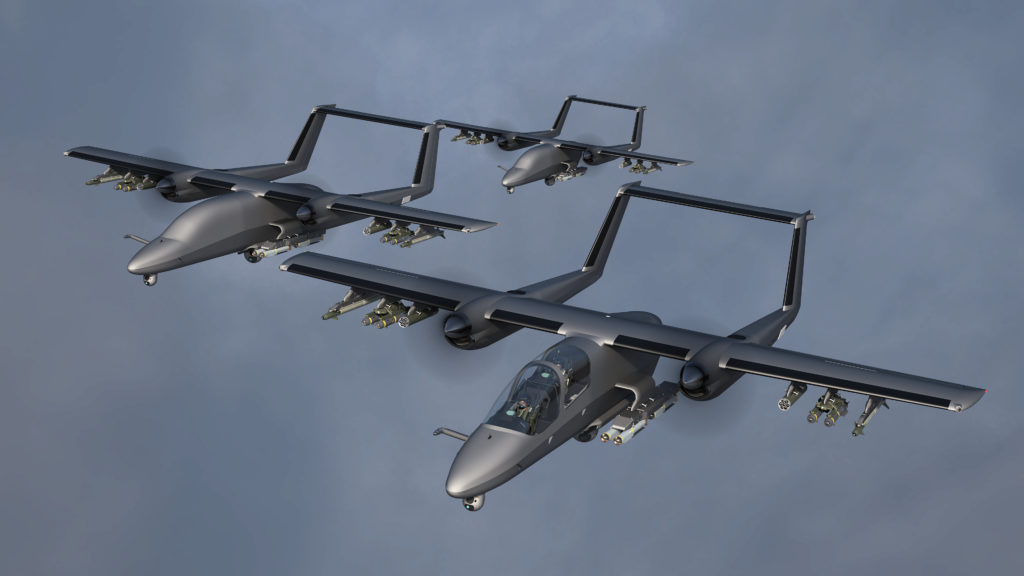
The marketing pitch also highlights the airframe’s redundant and backup critical systems and low maintenance requirements.
In total, the TAV is a result of how test pilots and flight test engineers see an aircraft, explained Ivankovic, a flight test engineer of some 15 years with experience on four clean sheet programs. He was a focal envelop expansion and high-risk flight test engineer on the Bombardier C Series program, executing 330 of the more than 2,800 flight hours to develop and certify the aircraft. He also participated in the early Global 7500 program and was part of the first flight and envelop expansion of the Gulfstream 600.
“Flight test people see aerospace through totally different eyes than others,” he said in a rapid-fire cadence reflecting his excitement about the aircraft. “We as a community see the complete picture of the aircraft, the good and the bad. We can relate it to the mission requirements, we can relate it to what really needs to be improved.”
The Icarus Aerospace team consists of 11 members at present. Most have opted to remain silent partners for the moment. But collectively, they have almost 350 years of experience in prime aerospace programs.
“A lot of us participated in evaluations for different defense aircraft. We understand the deficiencies of those airplanes and their limitations with respect to the operational world. We understand what people are going to hate in cockpits, what operators are going to hate on the ground. We were able to collect numerous evaluation reports through the flight test community of various platforms and basically turn that around, turn those limitations and deficiencies into requirements for design.”
The aim is an airframe that can be tailored to customer operational needs for a relatively modest acquisition price and a cost per flight hour under $3,000.
AMERICAN MARKET
Though still several years away from its first flight, the TAV variants have already attracted attention. The aircraft was recently assessed as an option for the U.S. Air Force Special Operations Command (SOCOM) Armed Overwatch program, which is seeking a dedicated multi-role platform able to deliver precision munitions to replace the U-28A Draco — a militarized version of the PC-12 turboprop that provides ISR capability.
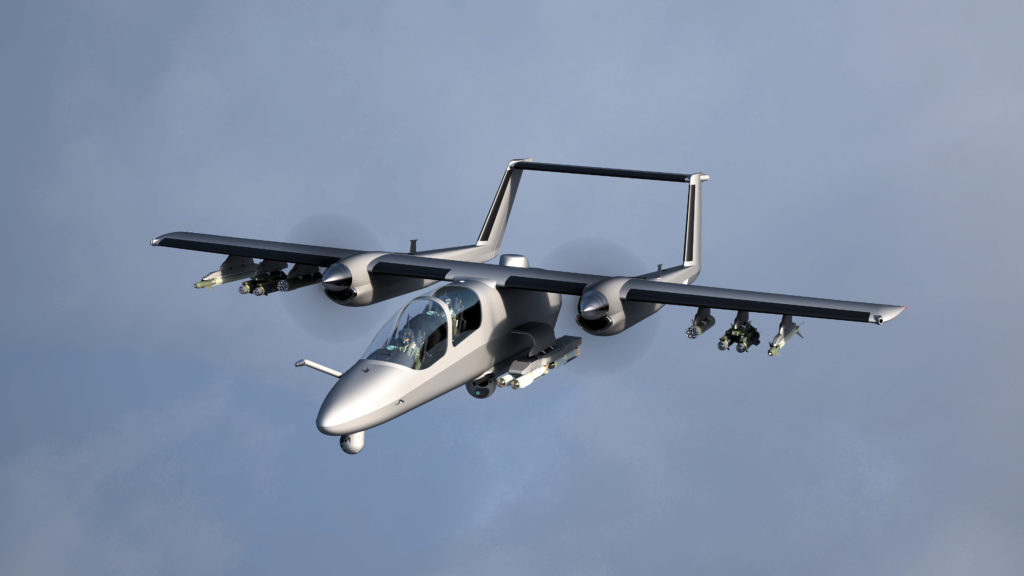
The TAV concept impressed SOCOM with scores that exceeded the objectives of the major technical requirements, Ivankovic claimed, but the aircraft was dropped because the program office required an aircraft to test-fly by November 2020. SOCOM has since pushed flying demonstrations to 2021 and Icarus Aerospace is hoping to reengage as the program further defines requirements.
U.S. Naval Air Systems Command (NAVAIR) has invited the company to submit whitepapers for Navy and Marine Corps programs, and the U.S. Air Force will be receiving a whitepaper for its MQ-X program, a replacement of the MQ-9 Reaper. The Branta would be an “ideal successor,” said Ivankovic, because of its cruise speed, range, power generation and payload options.
Icarus is also responding to an RFI from the Spanish Coast Guard, which is seeking options to replace its CASA CN-235 and Beechcraft King Air 350 with a single maritime patrol platform.
Ivankovic has been cautious about revealing too much of the TAV’s potential market, but he sees hundreds of aging fleets of attack support helicopters, close air support jets, maritime costal patrol airplanes, electronic warfare and electronic intelligence platforms, counterinsurgency turboprops, as well as traffic patrol and civilian SAR aircraft — more than half of which are expected to be phased out over the next 20 years.
“We are very confident that if we deliver this, we can capture at least 10 percent of the market segments,” which could translate into almost 1,000 aircraft, he said
The TAV has received accolades from aviation analysts such as Richard Aboulafia of the Teal Group, who called it a “fascinating concept” during an Aero Montreal International Aerospace Week presentation in December — noting its fit among emerging technologies that are taking “advantage of forgotten market niches that the traditional primes have neglected.”
Icarus Aerospace has taken steps to ensure it can compete both in the United States and globally. The company opened an office in Tampa Bay, Florida, and has received notice from the Department of Defense acknowledging it as part of the national technical industrial base and consequently compliant with Buy American regulations.
“The U.S. market is wide open for us,” said Ivankovic. “We don’t have risk like the C Series of someone complaining and then being blocked as a foreign company.”
The company has also adopted a modular baseline platform that can be offered in ITAR (International Traffic in Arms Regulations) and non-ITAR variants. “We can now maintain an ITAR-free green platform that is not weaponized, and we can weaponize it in an ITAR-free scenario,” he claimed.
CANADIAN MISSION
Icarus Aerospace touts the TAV as a “flying MRAP,” the U.S. Army’s rugged Mine-Resistant Ambush Protected vehicle operating in some of the most austere environments. But a Swiss Army knife might provide a better analogy. The company may have global ambitions for the multi-pronged platform, but it consciously aligned the TAV’s capabilities with Strong, Secure, Engaged (SSE), the Canadian government’s 2017 defense policy.

From the Royal Canadian Air Force’s (RCAF’s) next generation multi-mission aircraft (SSE 49), to remotely piloted systems (SSE 50) and expanded SAR capabilities (SSE 55), the TAV proposes to be a versatile aircraft that can fulfill numerous niches.
The Canadian Multi-Mission Aircraft (CMMA) is perhaps the most intriguing. Though the objective of the project is to replace the CP-140 Aurora by the early 2030s, senior RCAF officers have suggested in recent years the solution could be a mix of aircraft and sensors, rather than a single platform.
Icarus Aerospace has positioned the TAV as an option to augment whatever the Air Force acquires, rather than a competitor to any of the likely contenders such as the Boeing P-8 Poseidon or the Saab Swordfish, a Bombardier Global 6000 platform. Many maritime patrol and ISR missions can be accomplished with a smaller, less expensive aircraft, Ivankovic suggested.
“Instead of 16 [large aircraft, you buy six and then [two dozen] of the TAVs. You save money and you have enhanced your capability,” he said. “We actually provide much better detection range than currently fielded latest generation aircraft which are equipped with MAD-XR [a CAE-built magnetometer] integrated in the tail cone or fuselages. The magnetometer then operates within the magnetic field of the airplane and that has performance limitations on the sensor. We tow the sensor behind us about 100 feet and, with our fly by wire system, we can adjust the platform so we can sea-skim for long periods of time without causing crew fatigue.”
The TAV could conduct smaller missions on its own or, working in tandem as a manned or unmanned platform with a P-8, could greatly expand coverage of a search area, he suggested. And the data generated by its sensors can be fused on board or streamed to ground stations in real time.
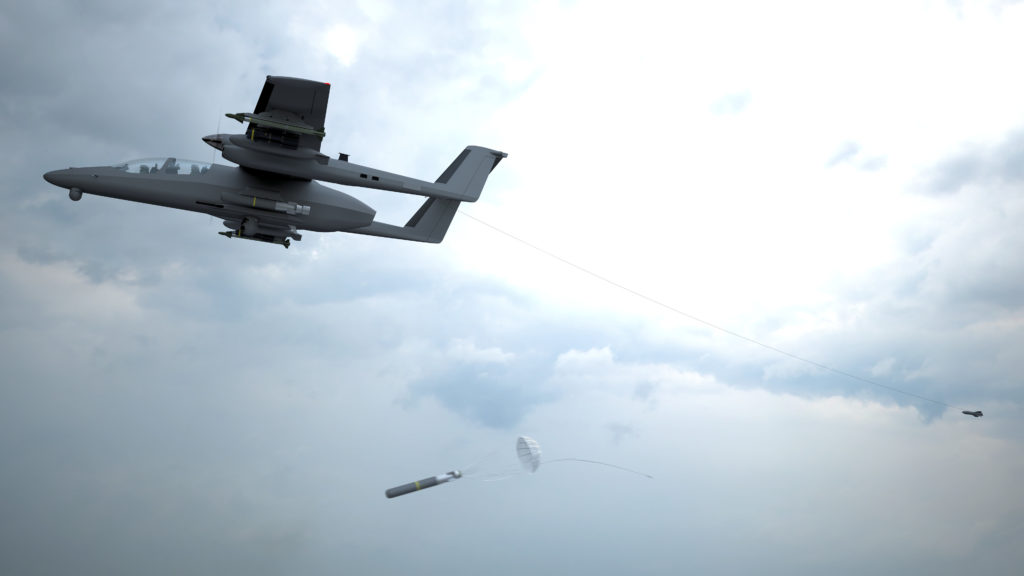
That makes the TAV an interesting fit for the Remotely Piloted Aircraft System (RPAS) project. The government is well into the procurement of a medium altitude, long endurance aerial system to operate domestically and internationally. Through an invitation-to-qualify process, Public Services and Procurement Canada has identified two potential bidders, L3 Technologies MAS and General Atomics Aeronautical Systems. A request for proposals is expected this year.
Icarus Aerospace has positioned Branta as a successor to the MQ-9 Reaper for the U.S. Air Force, and is hoping it can either get a foot in the door for the Canadian competition or augment the RCAF’s eventual solution. The twin-engine Branta is a better option for Arctic conditions than what is being proposed, Ivankovic argued, and has far greater electrical power and payload space.
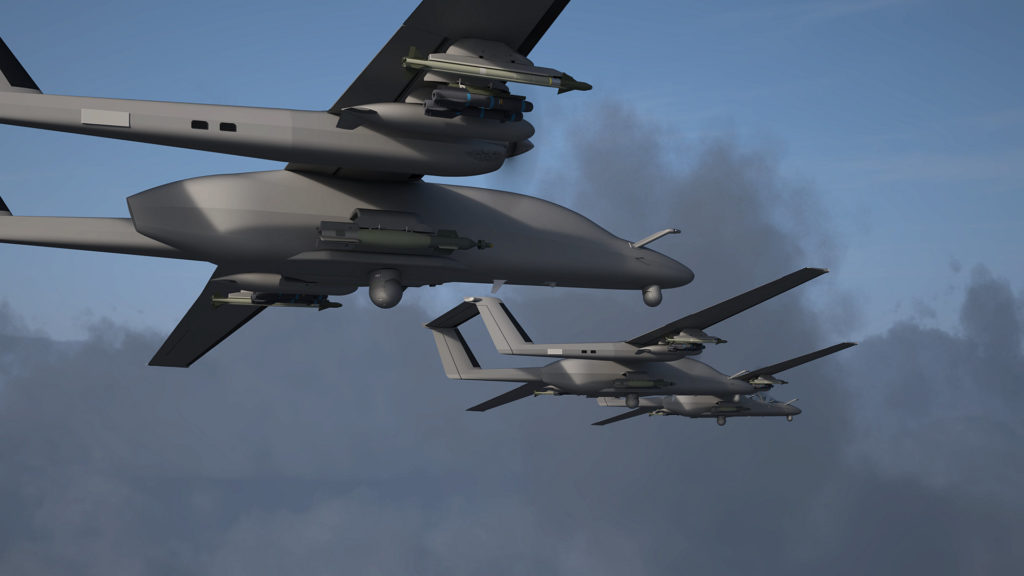
“We carry the optional APU, two engines, and have two dedicated generators plus two start-up generators. Depending on the configuration, you can generate three to four times more power [than an MQ-9], which means you can fully power up your synthetic aperture radar in an unmanned scenario. We have a dual ball system in the nose and the belly. We are really hopeful somebody is going to listen to this.”
The RCAF’s next fixed-wing search and rescue aircraft has already been acquired and will be entering service by summer 2022. Again, Icarus Aerospace sees the TAV as a complement to the CC-295 Kingfisher, working in either a manned or unmanned configuration to expand search capacity or conduct missions for which the full capabilities of the larger Kingfisher are not required. “If you are just going to kick out a bag of survival supplies somewhere, you can zoom up with this,” said Ivankovic, noting the TAV’s top speed of 360 knots.
CANSOFCOM has settled on the Beechcraft King Air 350ER as its preferred solution for the manned airborne intelligence, surveillance and reconnaissance (MAISR) project, acquiring three through a U.S. foreign military sales agreement in April 2019. TAV may be too late to the dance, but it is being positioned for whatever comes next or as a supplemental solution. The TAV airframe was designed based in large part on an evaluation of operational reports from the U.S. Air Force MC-12, an ISR variant of the Super King Air 350, in Afghanistan. The TAV incorporates many of the strengths of the MC-12 sensor systems while mitigating some of the weakness of the overall platform, Ivankovic said.

“We do see this as supplement to the next generation of drone and surveillance fleets,” he emphasized.
The TAV might even have some appeal as an air-to-air refueling platform. With the RCAF slated to retire its CC-130H tactical tanking capability in 2022, the unmanned Branta could offer an option for fighter jets on training missions. “Branta can carry almost 10,000 pounds of fuel, and we can deploy the drogue and hose directly from the fuselage. So, we could become a low cost, loitering refueling tanker that you can do unmanned. You don’t have to fly a CC-130 to offload 5,000 pounds of gas somewhere.”
FINANCIAL SUPPORT
With the first phase of the project under its belt, the Icarus Aerospace team is now looking beyond the TAV concept launch toward first flight. To take the next step, the company is seeking support from the federal and Quebec governments, qualified investors and prime contractors in the defense industry to support the completion of the wind tunnel testing and engineering simulation, leading to final design and build. First flight and flight testing would follow within 30 months.
Ivankovic and colleagues have briefed parliamentarians and hope to share the concept with officials from Innovation, Science and Economic Development this spring. A conversation with the Air Force is still pending, he said.
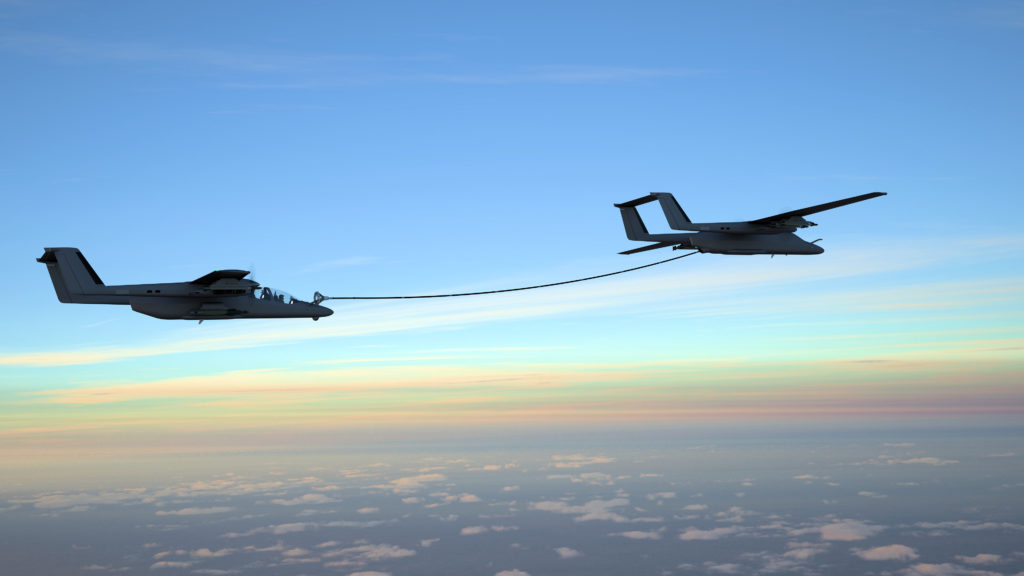
While capability, cost and limited risk are central to their pitch – much of the certification will be to military specifications, so the flight test program should be “lean” – they are also framing the TAV program as a way to preserve Canadian engineering talent and a portion of the supply chain. Bombardier has exited the commercial aircraft manufacturing sector and other companies are laying off or furloughing talent to manage the impact of the pandemic.
“There won’t be a lot of civilian research and development in the next four to five years at best,” Ivankovic noted. “We are losing people left and right. Our smartest people are going out of the country to work for our biggest competitors. If we want to save the R&D capacity and those skillful people, we need something like this, a very advanced R&D program, to keep them employed.”
Prime contractors such as Leonardo and CAE have shown some support with congratulatory tweets about the TAV’s adoption of the Osprey radar and MAD-XR; “Discreet installation means no aerodynamic drag of a radome, and aircraft’s belly is free for operations to & from unprepared surfaces,” Leonardo tweeted in August when the TAV was unveiled.
Whether Icarus Aerospace, like its namesake of Greek mythology, is flying too high with this concept, companies like CAE and Leonardo are watching the project closely. “[But] they want to see a nod from the government that they stand behind us before they invest,” Ivankovic stressed.



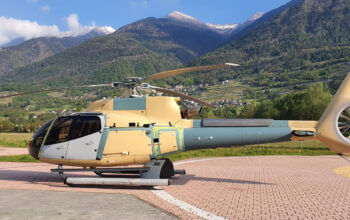
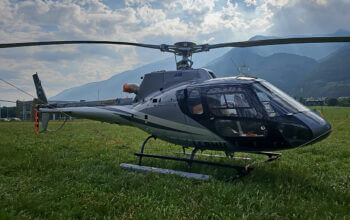

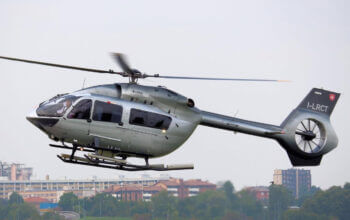
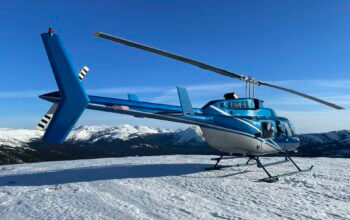

Wishing all the best as we need more investment in “All Canadian” aircraft.So much depends on goverment giving them a fair shake.Looks good and cost effective.Multiroll aircraft sre what is needed.Great story on. Canadian company who ee hope gets a well deserved look and contract.Hope the country recognizes innovation and gets this off the ground soon.
Congratulations to the Canadian Aircraft Industry. It looks like you have a winner.
North American Rockwell OV-10 Bronco
Which is no longer made and existing airframes are at the limit of potential upgrades. Did you read the article or just make an irrelevant comment? Does the Bronco have the power to run a SAR like this? Can the Bronco power and deploy a towed MAD bird like this? Can the Bronco comoete with the endurance of this? Is there a big wing high-altitude option for the Bronco. In other words all the things that make this aircraft what it is are things the Bronco can’t do. If you actually read the article you will know they based the airframe form on the Bronco. If you read and understood the article why would you make such a pointless comment?
If the company is Quebec based, Trudeau will give it all the money it needs.
I’d worry about heavy predated flakguns,they may seem insignificant but 3rd world nations have them.they aren’t electronic so you can’t jam them.
By the look of it, this aircraft looks like an easy kill. Too much to show in the sky….of course, that’s me thinking out loud. Wishing the budding entrepreneurs, all the luck and best wishes…
Remy I think its only intended once you have air superiority, which we have had in every war for the last 30+ years. For roles like close air support you could field a dozen of these or more for the same price as an F35, so I think the ground troops would be happy for continous sustained support rather than just a flhby from an F35.
I think its a great idea.
Really like the design looks like a cost effective aircraft. Canada should operate a fleet of these and look to export to countries in Latin america and Europe maybe also Australia/New Zealand
Tooooooo slow a flying Target re the Bronco ,that’s why they retired it .Great aircraft in a benign environment ,anywhere else NOT …
Yes, stop giving all the $$$ to the States. What we need is low cost robotic aircraft with supererior avoidance system.
Looks like the OV10 Bronco
Propllers? Really? In the 21st centuary?
Hello, is there any chance of reaching out to them for an update on the project?